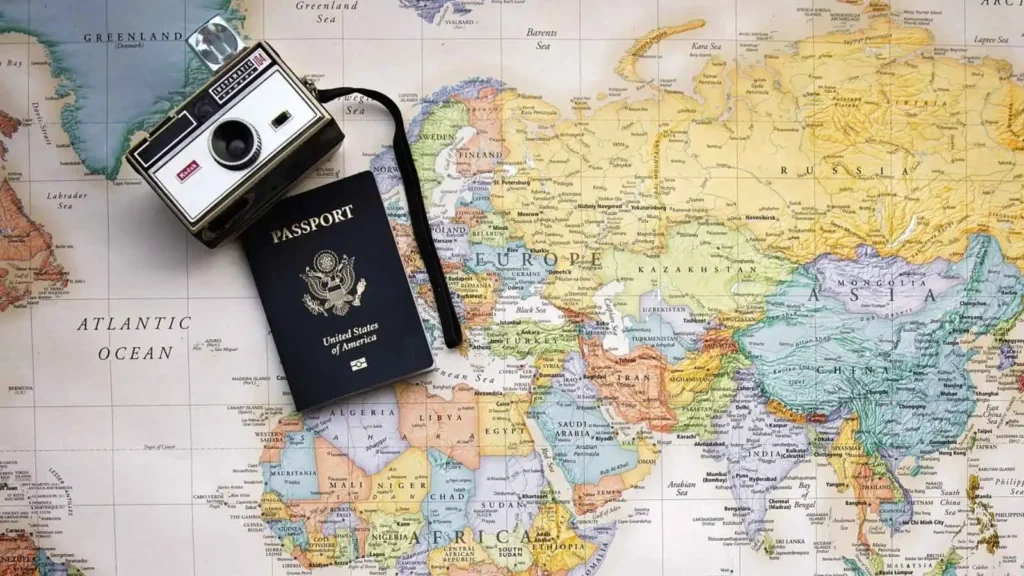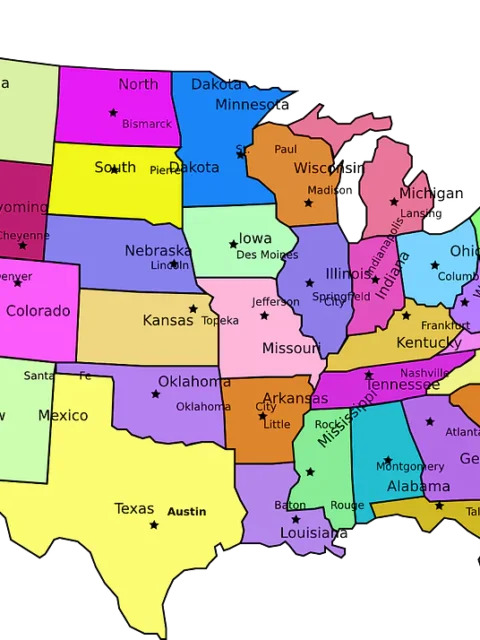How to Plan a Trip to Europe – 10 Best Tips and Advice for Exploring Like a Pro!

Europe is one of the most visited continents on earth, attracting over 700 million international visitors each year. Home to iconic cities like Paris, France (17.5 million visitors), Rome, Italy (10 million visitors), and Barcelona, Spain (12 million visitors) it’s no wonder there’s so much tourism here! Thinking about a solo trip, or maybe a visit with a few friends? These are some Europe travel tips to make sure you have a great vacation!
From romantic whirlwind weekends in Paris to the historic architectural wonders of Rome, each destination boasts a range of unique experiences you simply won’t find anywhere else. No matter what kind of culture, weather, or landscape you’re looking to discover, these top 10 Europe travel tips will help you with how to plan a trip to Europe you’ll never forget, no matter if you’re a first-time visitor or a seasoned travel expert!
Top 10 Tips for Traveling Europe
1. Check Visa Requirements Before You Travel
Most European countries are part of the Schengen Zone. This allows visa-free travel for up to 90 days for many passport holders, which makes most places in Europe super easy to visit! That said, this can be different depending on your nationality, and a select number of countries may require a visa, so be sure to double-check the visa requirements for any countries you intend to visit during your Europe trip.
2. Currency Exchange: Don’t Get it Wrong!
When people visit Europe from elsewhere across the globe, they may automatically assume that everywhere uses the Euro. While this is true for many countries, there are some that have their own currencies, such as The UK, which has the Pound Sterling, and Switzerland, which still uses the Swiss Franc. Credit Cards or pre-paid travel cards can often offer the best exchange rates, but some rural areas may still prefer the use of cash!
Be sure to change any currency before you travel, as on arrival at your destination, it can become quite expensive. Airport kiosks typically charge 3%-10% in hidden fees, costing up to $100 on $1,000 exchanged! This is even the case with some “no fee” claims.
If you really need to get cash when overseas, it often works out much better to simply use an ATM, as these can offer wholesale rates, which despite a couple of small fees, can help save travelers a lot of money!
3. Travel During the Off-Season
Visit Europe in Spring (April-May) or Fall (September-October), otherwise known as the shoulder seasons, to enjoy cheaper flights and accommodation, along with less crowded destinations.
4. Know What to Pack
Be sure to do research on your chosen destinations so you know what to pack. This is especially important if you plan on stopping in multiple destinations. We recommend packing layers to easily dress for unexpected weather, comfortable walking shoes, and a universal adapter (not every country in Europe has the same style of plug sockets!)
Be sure to also pack copies of important documents, such as your travel insurance!
5. Debit vs. Credit vs. Cash
As we mentioned before, not all countries in Europe use the Euro, so it’s important to also know how you can spend money overseas.
- Credit Cards: Best for large purchases and protection against fraud.
- Debit Cards: Ideal for ATM withdrawals; be sure to check for international transaction fees.
- Cash: Handy for local markets, small towns, and tips
6. Booking Flights
Use tools like Skyscanner or Google Flights’ “Explore” features to find affordable options if you plan on visiting a few different countries on your trip to Europe. Flying into smaller airports, like Milan Bergamo instead of Milan Malpensa, can also help save money!
7. Travel by Train
While sometimes flights can be cheaper depending on the country, another good idea is to get a pass that allows travel on trains all across Europe, for example, the Eurail Pass, which allows unlimited train journeys. If you plan on traveling a lot during your stay, this is a no-brainer that many Europeans also use when traveling the region! So once you’ve enjoyed a 4 days in Paris itinerary, you can head straight over for a long weekend in Belgium, before spending a few days in Germany.
8. Booking Hotels & Hostels
Finding the perfect place to stay can be difficult, especially if you’re on a budget! Use sites like Hostelworld to find budget-friendly stays with great reviews – Those with central locations, social activities, and free breakfast are some of the best.
9. Shopping
Be sure to save plenty of space when packing! Whether you’re wondering what to buy in Paris, or already have your heart set on bringing home a bottle of locally sourced wine from the vineyards of Tuscany, ensure you have enough space in your suitcase to bring it home!
When making your purchases, be sure to enquire about VAT refunds, as these are sometimes available from select retailers for purchases over a certain amount.
10. Food
Be sure to sample some of the local dishes, be sure to find out what to eat in Paris or Barcelona, or any other destination you choose to visit before you arrive. Cultural cuisines are very different in each country across Europe, so be sure to understand what you want to sample before you get there!
Europe Travel Tips for Regional Europe
Now we’ve covered travel tips for Europe, it’s worth noting that with this being quite a large continent, there’s a wide range of different cultures to explore. To help you decide where to visit (and tips for each of these areas), we’ve split the continent up into distinct regions for this section!
1. Northern Europe
Northern Europe is a gorgeous destination for those who like cooler weather. With cold destinations and unique culture, be sure to plan ahead by packing warm clothing and planning your chosen activities around very short daylight hours during the Winter months.
Key destinations to visit in Northern Europe include Copenhagen in Denmark, Reykjavik in Iceland, and Helsinki (my personal favorite) in Finland!
2. Southern Europe
Southern Europe is one of the most visited areas of the continent and includes destinations such as Rome in Italy, Athens in Greece, and Lisbon in Portugal.
This area experiences warmer weather, so be sure to pack accordingly, and stay hydrated at all times during your visit. Ensure you bring some sunscreen with you, especially if you’re visiting during the summer months. It’s a great area for exploring historical architecture, wine, and off-the-beaten-path villages.
3. Western Europe
One of the best regions for city exploration alongside culture and history is Western Europe. The weather here is quite seasonal, so be sure to research in advance what kind of temperatures to expect during your visit.
The warmer months are generally the best time to visit Paris in France, Amsterdam in The Netherlands, and Brussels in Belgium, as well as other great cities in the region.
Related Guide: Best Hotels to Stay in Paris
Eastern Europe
Another fairly cold region, Eastern Europe is full of Soviet history and some truly unique cultures. It’s an incredibly popular destination with budget travelers, thanks to its great value for money, budget accommodations, and excellent cheap dining options!
Tips to Travel Europe on a Budget
It can be difficult to know how to travel to Europe on a budget, but if you want to keep the costs down, there are a few things you can do to enjoy an exciting vacation, without breaking the bank!
- Visit hidden gems in Paris, which often include some of the city’s most picturesque corners and other major cities – these are less crowded than major tourist spots, and dining at a hidden gem restaurant or cafe can be much cheaper than those located in central tourist spots.
- Explore free things to do in Paris, Barcelona, and London. These major cities can be quite expensive, so finding free activities to fill your time with helps keep costs low. A spring walk and mini-picnic along the Seine or visiting one of London’s many free-admission museums are iconic no-cost options!
- Use public transport passes to make city travel cheaper.
Tips to Travel Safely in Europe
When it comes to traveling anywhere, it’s important to make safety a top priority. Here are some tips for staying safe in Europe.
- Be aware of your surroundings. Be sure to keep an eye out for pickpockets, especially in crowded areas, on public transport, and around tourist hotspots.
- Know emergency numbers in all the countries you plan on visiting. 112 can be called in most European countries, but it’s a good idea to double-check before you travel!
- Blending in and trying not to stand out as a tourist can help reduce unwanted attention, pickpockets, or scammers. Respect local customs, and try to dress as locals do!
Conclusion:
By planning your European getaway with these tips in mind, you can ensure a fun-filled and exciting trip. From the romantic places in France to picturesque train journeys through the Italian countryside, there’s so much to explore that you can’t find anywhere else in the world!











